实验5:开源控制器实践——POX
(一)基本要求
1.搭建下图所示SDN拓扑,协议使用Open Flow 1.0,控制器使用部署于本地的POX(默认监听6633端口)
2.阅读Hub模块代码,使用 tcpdump 验证Hub模块;
h1 ping h2:
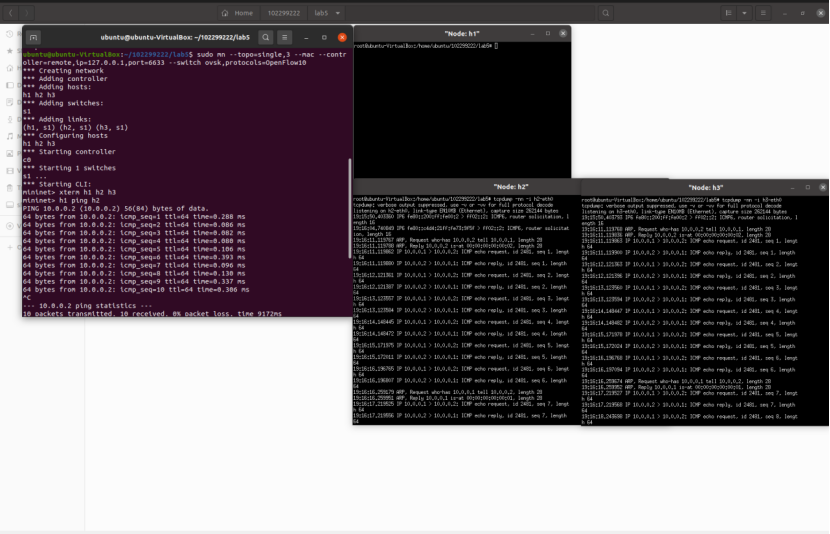
h1 ping h3:
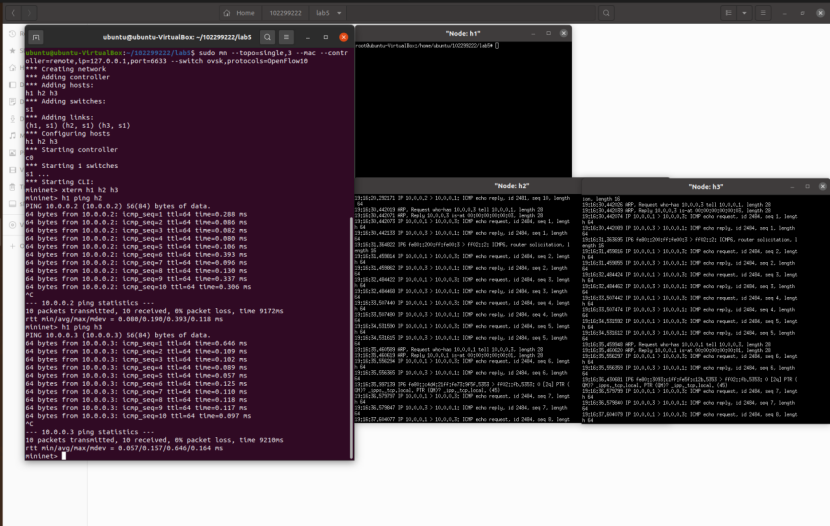
3.阅读L2_learning模块代码,画出程序流程图,使用 tcpdump 验证Switch模块。
流程图:

h1 ping h2:
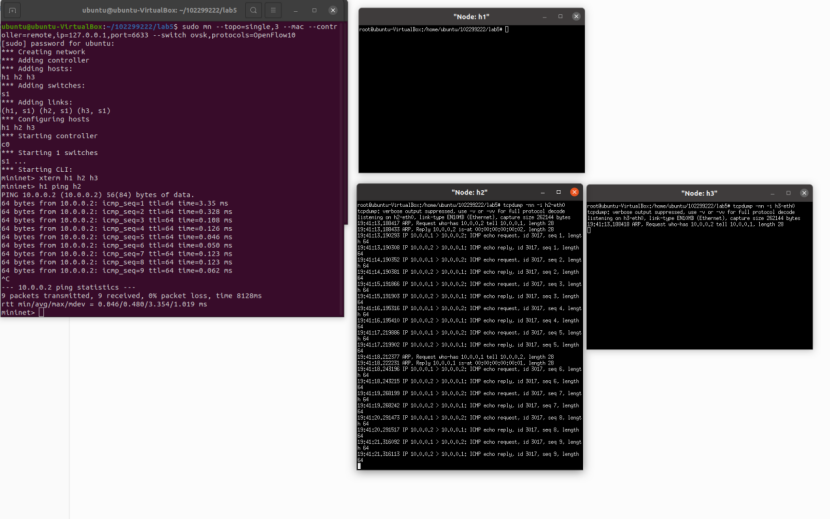
h1 ping h3:
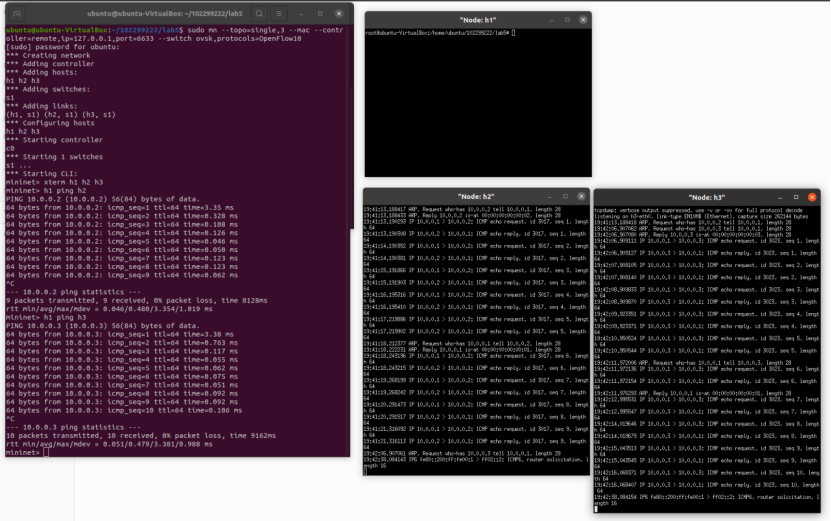
(二)进阶要求
1.重新搭建(一)的拓扑,此时交换机内无流表规则,拓扑内主机互不相通;编写Python程序自定义一个POX模块SendFlowInSingle3,并且将拓扑连接至SendFlowInSingle3(默认端口6633),实现向s1发送流表规则使得所有主机两两互通。
构建拓扑:
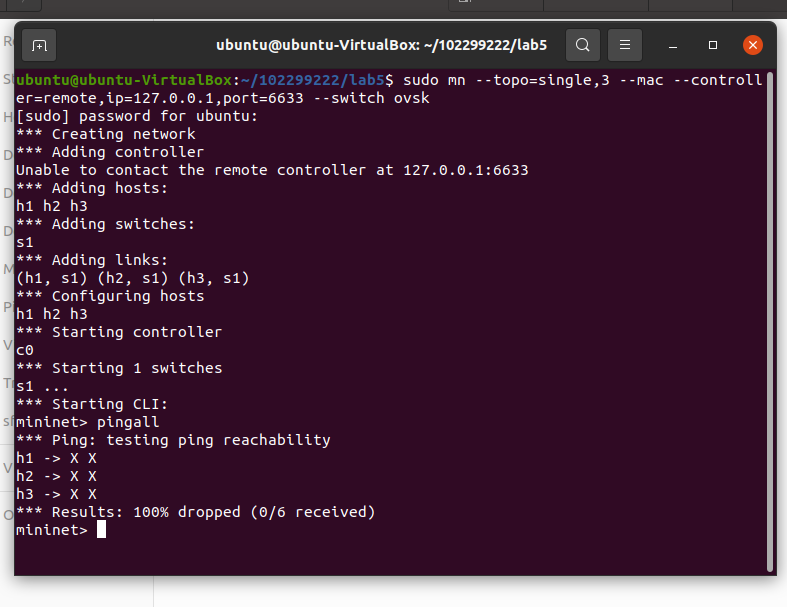
SendFlowInSingle3:
from pox.core import core
import pox.openflow.libopenflow_01 as of
class SendFlowInSingle3(object):
def __init__ (self):
core.openflow.addListeners(self)
def _handle_ConnectionUp(self, event):
msg = of.ofp_flow_mod()
msg.priority = 1
msg.match.in_port = 1
msg.actions.append(of.ofp_action_output(port=2))
msg.actions.append(of.ofp_action_output(port=3))
event.connection.send(msg)
msg = of.ofp_flow_mod()
msg.priority = 1
msg.match.in_port = 2
msg.actions.append(of.ofp_action_output(port=1))
msg.actions.append(of.ofp_action_output(port=3))
event.connection.send(msg)
msg = of.ofp_flow_mod()
msg.priority = 1
msg.match.in_port = 3
msg.actions.append(of.ofp_action_output(port=1))
msg.actions.append(of.ofp_action_output(port=2))
event.connection.send(msg)
def launch():
core.registerNew(SendFlowInSingle3)
运行结果:
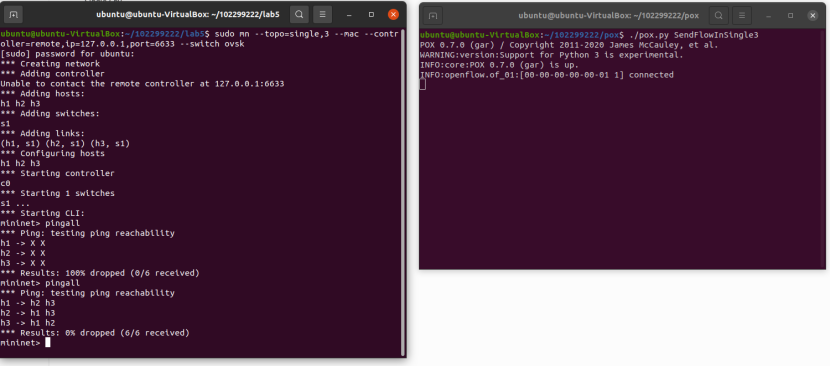
交换机流表项:
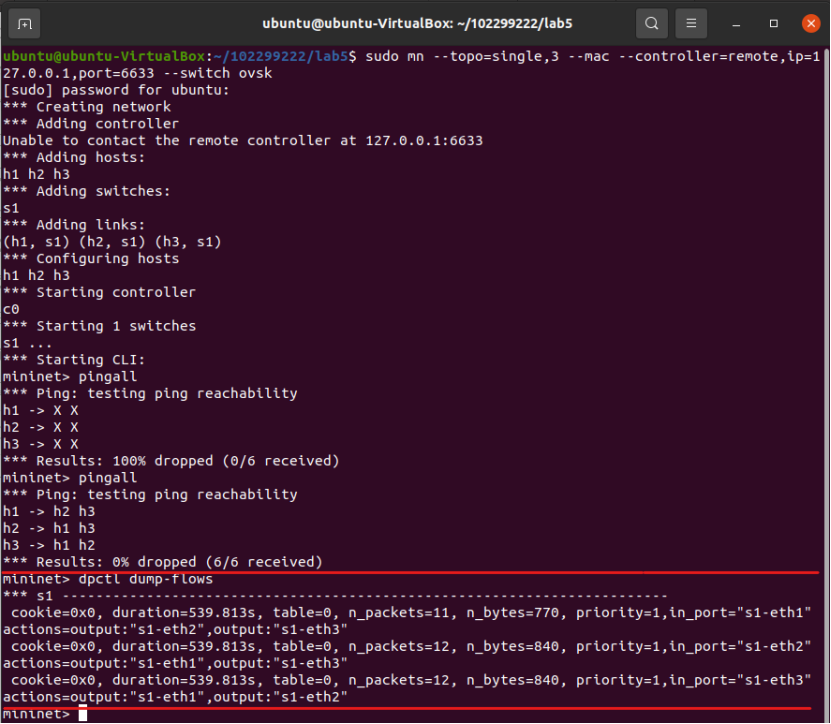
2.基于进阶1的代码,完成ODL实验的硬超时功能。
SendPoxHardTimeOut:
from pox.core import core
import pox.openflow.libopenflow_01 as of
class SendPoxHardTimeOut(object):
def __init__ (self):
core.openflow.addListeners(self)
def _handle_ConnectionUp(self, event):
msg = of.ofp_flow_mod()
msg.priority = 1
msg.match.in_port = 1
msg.actions.append(of.ofp_action_output(port=2))
#msg.actions.append(of.ofp_action_output(port=3))
event.connection.send(msg)
msg = of.ofp_flow_mod()
msg.priority = 1
msg.match.in_port = 2
msg.actions.append(of.ofp_action_output(port=1))
msg.actions.append(of.ofp_action_output(port=3))
event.connection.send(msg)
msg = of.ofp_flow_mod()
msg.priority = 1
msg.match.in_port = 3
#msg.actions.append(of.ofp_action_output(port=1))
msg.actions.append(of.ofp_action_output(port=2))
event.connection.send(msg)
def launch():
core.registerNew(SendPoxHardTimeOut)
运行结果:
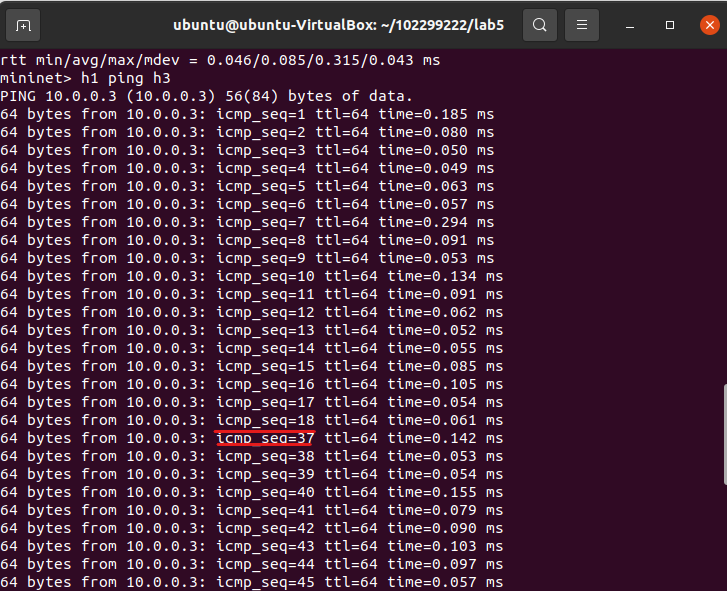
个人总结
本次实验我了解了POX的forwarding.hub和forwarding.l2_learning模块,初步掌握了POX控制器的使用方法,学到了运用POX控制器编写自定义网络应用程序。本次实验对于我来说较为困难,特别是进阶实验中编写Python程序的部分,阅读PPT提供的链接中的文档特别困难,要一个一个找相关的代码。并且在画l2_learning的流程图时,l2_learning模块代码阅读起来较困难,看了许久才发现在l2_learing.py文件定义 LearningSwitch中的前面部分有部分代码的注释,减少了阅读代码的难度。最后,由于SendFlowInSingle3.py和 SendPoxHardTimeOut.py无法在/home/用户名/学号/lab5/中运行,所以要先用sudo chmod o+w pox 对pox文件夹增加写的权限,再把两个Python程序复制到pox文件,才能使用 ./pox.py SendFlowInSingle3 和 ./pox.py SendPoxHardTimeOut 。


 浙公网安备 33010602011771号
浙公网安备 33010602011771号